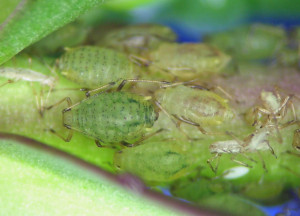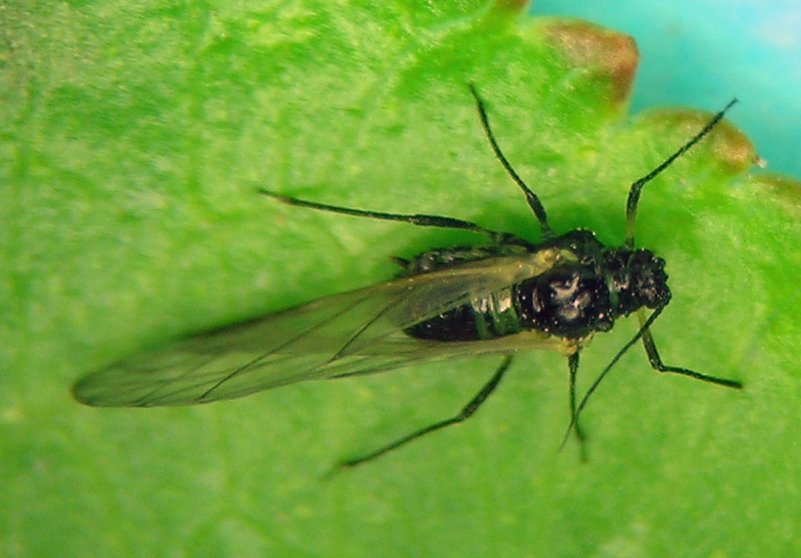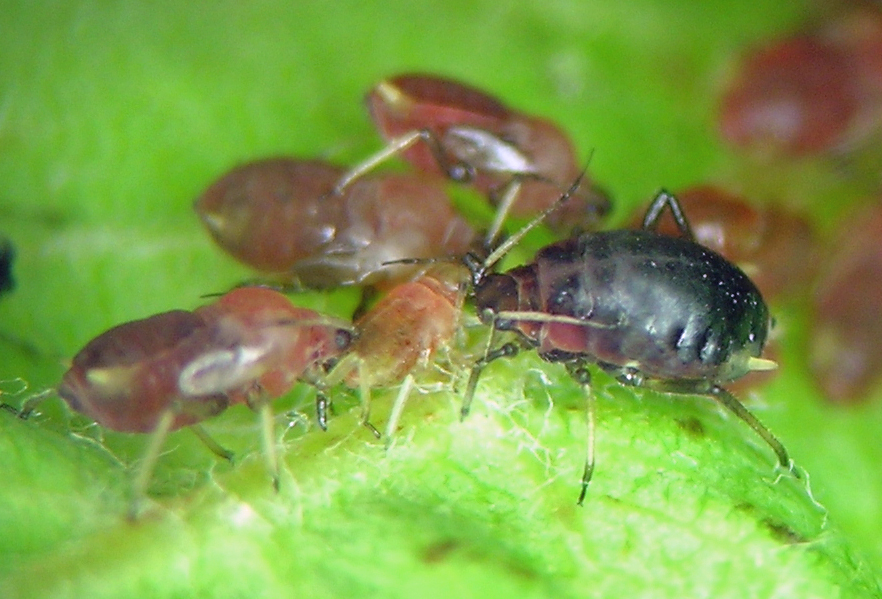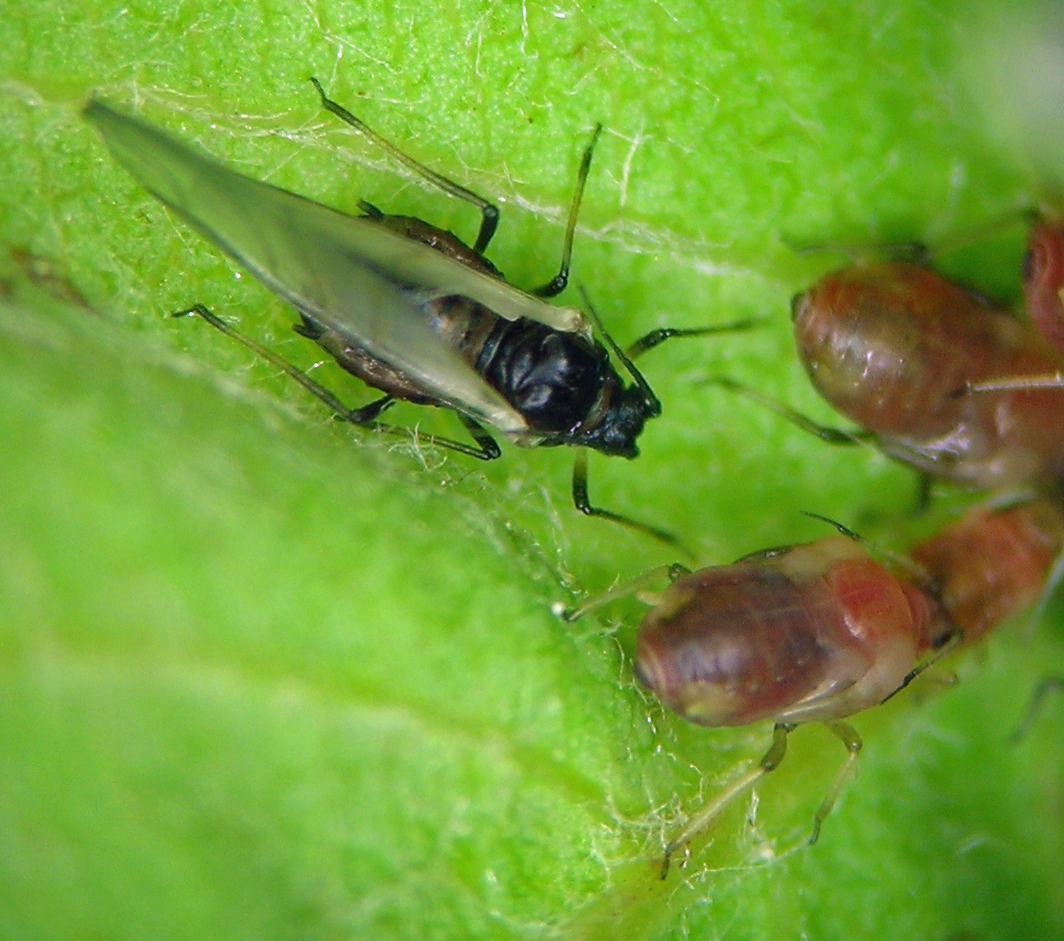Nearctaphis Shaposhnikov
This page updated: December 2024.
This is an easily recognized genus for a small but unknown number of species. As noted by Blackman and Eastop, “most species are poorly known.”

Another case of understatement. In my collection I somewhat confidently identify three species, plus I have less confidently assigned a handful of slides to other species. All the others I have turned to separation based on “morphospecies” without assigning published names. I have been avidly collecting Nearctaphis for over 20 years, and will continue to do so. Perhaps if I live another 30 years, there will be enough material to revise the genus (maybe sooner for someone smarter than me). During winter of 2018 I examined all my Nearctaphis material other than N. sensoriata, added species names to some N. bakeri and N. kachena slides (see below for some new thoughts and information on the latter), and refined my sorting of everything else to morphospecies. There are definitely quite a few separate-able species in Oregon and nearby states! In most cases I am still not trying to put species names on slides because I have only a few slides of each group, and usually only alate viviparae. That is simply not enough material to characterize a ‘species’ in my mind.
Species covered below (click on the name to jump to that species):
- Nearctaphis bakeri (Cowen)
- Nearctaphis crataegifoliae (Fitch)
- Nearctaphis kachena (Hottes)
- Nearctaphis (Amelanchieria) sensoriata (Gillette & Bragg)
Nearctaphis bakeri (Cowen)
This is a very common species that has become a pest of cultivated Trifolium. I collect it frequently on its Rosaceae primary hosts, especially on ornamental Pyrus and various Crataegus. On secondary hosts, I find it on a range of Trifolium (Fabaceae) species, Castilleja & Pedicularis (Orobanchaceae), and Penstemon (Plantaginaceae). It is possible that more than one species is lumped into this general category. During fall of 2024 I took a look through all my material in the N. bakeri category (about 80 slides) with the aim of finding morphological distinctions that might separate it into groups based on life cycle, host plant, or geography. I was not able to find anything useful. As noted above, the biggest problem I see with this ‘species’ is that there are populations in high elevation forest habitats that build up to large numbers on Penstemon far too early in the season to have originated on a relatively local primary host Pomoideae. For example, I have a sample of apterae and alatae living on Penstemon in the forest near Lakeview, Oregon (~5,000 feet, 1524 meters elevation) on 28 May 2020. In this area there are few native Pomoideae, so instead I used trees in our garden to calibrate the season. Our apples broke bud about April 7. So let’s imagine that these Nearctaphis originated from local apples. They would have to hatch from eggs around April 7, mature to adult fundatrices, produce second generation alatae (although supposedly the third generation is alate in this species), migrate to Penstemon, and produce a third generation of mixed alate and apterous females, all in about 7 weeks. This is exceedingly unlikely to impossible given the cold climate in this area and the fact that producing alatae in both the second and third generations is practically unheard of. So, we are left with three options to explain these early populations on Penstemon in the forests near Lakeview: 1) the Penstemon is colonized very early in spring by alatae flying in from far away warmer climates such as the Willamette Valley in western Oregon or the warm agricultural valleys of northern California; 2) I was looking at an anholocyclic population on Penstemon, able to overwinter as apterae or nymphs; or 3) I was looking at a monoecious holocyclic population overwintering as eggs on Penstemon. Option 1 seems incredible to me because when these early populations are found on Penstemon they are on almost all plants in a given stream drainage. In order for this to be the case in May in these habitats, all those plants would have to be colonized independently by migrants from far away — an unlikely coincidence. In my view options 2 and 3 are equally likely. Although winters are long and harsh in the Lakeview area, aphids can probably overwinter as eggs or apterae under the snow in most years. More thorough early-season field work will be required to resolve this mystery.
I have material identified as this species from Washington, Oregon, Idaho, California, Nevada, Wyoming, Colorado, Wisconsin, and New York.
Nearctaphis crataegifoliae (Fitch)
I use this name tentatively, as with all species in this genus, because species-level understanding of Nearctaphis is very poor. Nonetheless, I was pleased to find what I call N. crataegifoliae close enough to home to get a photo. It was growing on a small native Crataegus shrub in the Fremont National Forest, where Crataegus is extremely uncommon. This aphid is obviously heteroecious, but despite much effort I have never seen it on its legume secondary hosts.
Nearctaphis kachena (Hottes)
Even though I don’t have any photos of it, I wanted to add a bit about Nearctaphis kachena. After many years of collecting Nearctaphis, I’ve accumulated quite a few samples from various Castilleja (Orobanchaceae) species across the west. During winter of 2018 I finally sat down and looked through them all. I think that almost all of them belong to one species, and it seems that N. kachena is the best fit. There is some variation among the samples in terms of how smooth are the tarsi and how long and segmented are the antennae, but these features seem to be rather variable in Nearctaphis generally when many samples from many places are considered. In N. kachena, apterous viviparae sometimes even have 5-segmented antennae. Also of interest is that I have collected this species from not only Castilleja but also from subalpine species of Pedicularis (Orobanchaceae), Mimulus (Phyrmaceae), and Penstemon (Plantaginaceae). For years this species has been assumed to likely be heteroecious. In early spring of 2020 I found what appeared to be N. kachena on a small native Crataegus in the Fremont National Forest of southern Oregon. Then, during 2021 in Colorado I collected several alate viviparae from Crataegus in the fall that almost certainly are N. kachena, offering strong support for this species being heteroecious. I now have specimens from Washington, Oregon, Idaho, California, Montana, Nevada, and Colorado.
Nearctaphis (Amelanchieria) sensoriata (Gillette & Bragg)
This is the Nearctaphis that I find most commonly, probably because it is abundant and very apparent on its Amelanchier (Rosaceae) hosts in the spring and fall. As noted by others, it is probably heteroeceous, but I have yet to find a secondary host for it. Most likely such a host would be Fabaceae, and probably the roots or underground stems. I am not as adept at collecting underground aphids as I could be…. I have material from Washington, Oregon, Idaho, Montana, California, Nevada, Colorado, and New Mexico.





